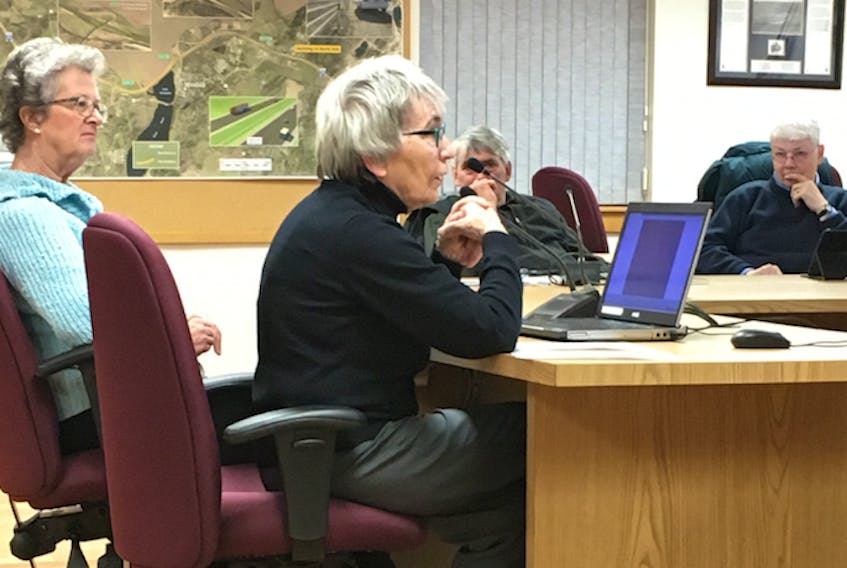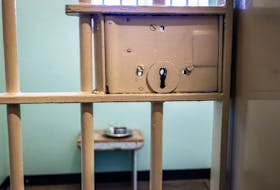FALMOUTH, N.S. — Described as ‘a cultural gem,’ the Sainte-Famille Cemetery in Falmouth has been granted municipal heritage status.
On Feb. 12, West Hants council heard a presentation by Madelyn LeMay, the municipality’s director of planning, and members of Les Amis de Grand-Pré, requesting the historic cemetery be listed as a registered municipal heritage property.
Prior to October 2018, cemeteries were excluded from being eligible for such a municipal designation.
“In looking at the criteria and the relationship of Sainte-Famille Cemetery, we find that the property is certainly a symbol of provincial importance as a pre-deportation Acadian cemetery,” said LeMay, who said the caretakers of the site requested the designation in August 2018.
LeMay said the cemetery, located at 419 Gabriel Rd., meets the selection criteria required for a municipal heritage property designation. Not only is it from the Acadian Period (1675-1755), which makes it automatically eligible, but it scored 60 out of 100 on the remaining criteria.
“When you go and look at the site, there really isn’t much above-ground at this point. There are interpretive panels, several monuments and a commemorative brick walkway — none of the individual headstones that you would, perhaps, find because they have been destroyed over time,” she said.
But the lack of headstones doesn’t lessen the property’s significance to Acadian descendants and historians.
“One of the criteria that really stood out was it’s intimately connected to a person, group or event of primary importance to the local area,” said LeMay.

Highlighting Acadian heritage
Sally Ross is the secretary of Les Amis de Grand-Pré, a non-profit organization founded in 1990 that is interested in the pre-deportation history of Acadians in the Annapolis Valley. The group has been involved with Sainte-Famille Cemetery since it was discovered, by chance, in 1996. They took on ownership of the property in 2015.
“Why would an old Acadian cemetery be of value to West Hants?” asked Ross while speaking to West Hants councillors in support of the municipal heritage property designation.
“Other than the dykes and remnants of place names, there’s virtually nothing left of Acadian heritage,” said Ross. “Basically, the Acadian heritage in West Hants is invisible.”
The Acadian parish of Pisiquid, which is what is now referred to as Falmouth, was established in 1698.
The cemetery site once contained a church and a priest’s house, and was used by residents until the mass expulsion of Acadians by the British Empire in 1755. The buildings were destroyed in 1756. Over time, the cemetery became overrun with vegetation and nearly forgotten.
“A cemetery that is well-documented historically and archaeologically — there were archaeological digs at the time of the discovery of the cemetery in 1996 — provides an important human dimension to the Acadian heritage of the area,” she said.
The burial ground was unearthed in the summer of 1996 while the area was being excavated to create the Mountain View subdivision. Construction plans were halted while the Nova Scotia Museum investigated the discovery. About 300 graves are thought to be at the site. A committee was struck to preserve the Acadian site, and funds were raised to purchase the land and erect a memorial.
By August 2000, work on the memorial began and a reburial ceremony was held to honour the remains that had been discovered and examined.
Ross said of the four Acadian parishes that were located in the Minas Basin area, the Falmouth site is the only pre-deportation cemetery where an official internment ceremony has taken place following archaeological digs. It is also the only pre-deportation Acadian cemetery in Nova Scotia with provincial heritage status, which was granted on Sept. 18, 2017 at a special ceremony at the site.
The Louisiana connection
The Falmouth site attracts many visitors each year, especially historians and those with Acadian heritage.
Susan Surette-Draper, the president of Les Amis de Grand-Pré, said those who visit the site leave feeling a deeper connection to the past.
“They are seeking the cemetery for personal reasons. For them it’s a pilgrimage,” said Surette-Draper.
Tours are often conducted featuring key Valley locations, like Grand-Pré National Historic Site. When they arrive at the cemetery in West Hants, Surette-Draper said the visit becomes sombre.
“As they get close to the cemetery, people get really subdued. Real connections can be made in a place like this,” she said.
“Although there are other Acadian sites in the area, to Acadians, being welcomed onto a piece of land that’s been preserved... is a really touching thing. It speaks of inclusion and respect,” she said, noting that neighbours take care of regular lawn maintenance.
“Cemeteries are spiritual places, even the ones that don’t physically resemble a cemetery any more — like this one,” Surette-Draper said.
“It’s very peaceful there.”
About 1,300 Acadians lived in the Windsor-Falmouth area prior to deportation.
“Several hundred left the area when Fort Edward was built, but 981 were actually detained and deported from Fort Edward and loaded onto five ships and taken to Maryland, Philadelphia, Boston and Virginia,” said Ross.
She said the majority of Acadians who arrived in Maryland made their way to Louisiana, which was a Spanish colony at the time. Ross said those descendants have a particular attachment to the area, with numerous Cajun families purchasing commemorative bricks that were placed in the cemetery.
Due to the historical significance of the site, council voted unanimously in favour of granting municipal heritage status.
RELATED









